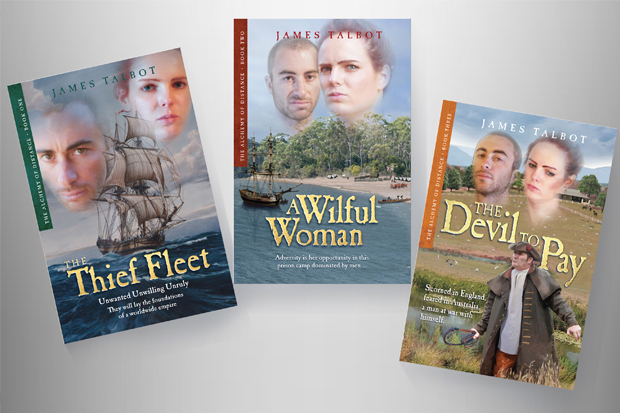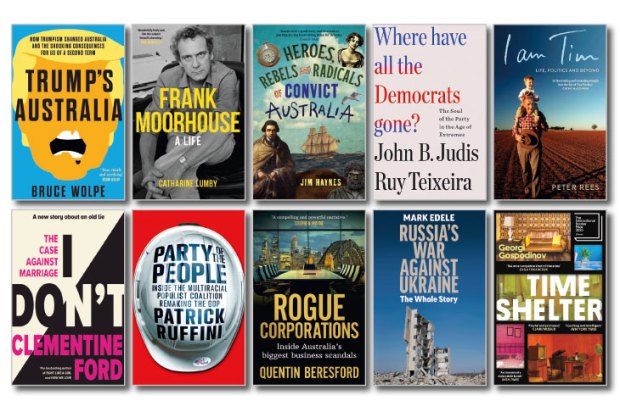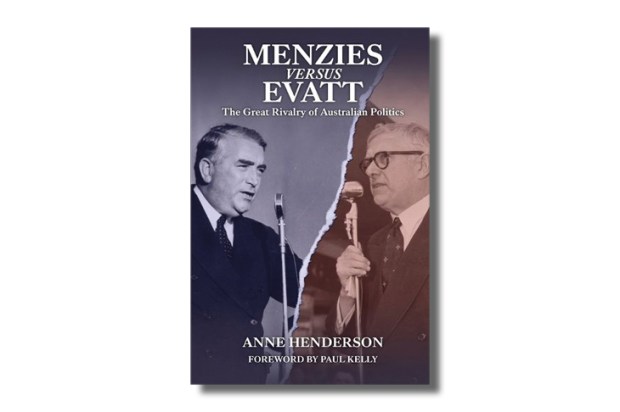This story, second in a projected series (the first was The Thief Fleet, reviewed in these pages 8 December 2012), invites comparison with Thomas Keneally’s 1967 book Bring Larks and Heroes, which won the Miles Franklin award.
Both are set in the first days of Sydney Town, both deal with intrigues around the lives and fates of about 1,400 souls dumped at the end of the Earth, both spare no gory details of the savagely-disciplined penal colony, and both end with a hanging.
Bring Larks and Heroes was hailed as a classic when it appeared, and even as the long-awaited Great Australian Novel. However, if one is to rate the two I would say A Wilful Woman is the better in terms of plot, characterisation and descriptive writing. If Talbot maintains the standard of the first two books, the result may well be something great.
The story is driven, like all the best novels, by character interaction, some characters real, some imaginary, but all as vividly realised as the virgin landscape of the Australian bush. Governor Phillip, son of a Jewish school-master from central Europe, struggles with the frightful responsibility for all the lives under his care, with his own shaky social background, with a disloyal second-in-command, and with the nightmare task of feeding a colony with topsy-turvy seasons that has almost no farmers and indeed few with skills beyond picking pockets.
Phillip’s great work in bringing the infant colony into the world and setting it, however unsteadily, on its feet has not really been part of our historical memory or national consciousness but this story does him justice. It shows him as not merely a worthy administrator but a hero, his rule, though with a steely core, guided and moderated by a genuine commitment to the new principles of the Enlightenment. He is the quintessence of The Man Alone (the figure that fascinated C.S. Forrester), thousands of miles from any help, often torn between duty and humanity, and with all the colony’s lives in his hands, as well as fears that the Frenchman La Perouse will claim the continent first.
He also bears a ‘high’ secret: the penal settlement of Sydney is only a blind. Its real purpose is to establish a fortress and naval base in the Eastern seas to protect the China trade and in readiness for the next round of wars with France.
Other real historical characters include the junior Marine officer Watkin Tench, who rose to be a General and left one of the most important accounts of the colony’s first days, Johnson, the colony’s first clergyman, and Phillip’s second-in-command, Major Ross, grappling with a situation really beyond his intelligence (though his position is treated with understanding and even compassion). The Aboriginal leader Bennelong (‘Benny Long’ to the convicts), strives to understand and communicate with them.
Kitty Brandon, the wilful woman of the title, is a convict and actress with the mind of a commander-in-chief, who fights to get bearable conditions for the females. Tough and hard-bitten, she is responsible for bringing humanising touches to the penal colony. Interacting with her are ‘tinderbox’ Joe Cribb, ex-Sergeant Major and arsonist (a thriving profession in 18th Century London) and ‘Leafy’ Levy, a Jewish hedge-doctor and abortionist who is also almost the only doctor they have. The yokel Ben Thorpe, a country boy who innocently passed a bad coin at a fair, and was lucky to escape hanging for it, becomes a man of consequence and authority as almost the colony’s only farmer.
The characters do not complain about the injustice of their situation, but face it with gritty resolution.
There is a satisfyingly nasty and charming villain, ‘Beau’ Nash, exiled but scheming to recover his place in England’s establishment, who as his schemes are ripening, is brought low by an overlooked detail.
New South Wales did not offer the challenges of some other colonies: there were no well-armed and organised native armies, no ferocious animals. But it had challenges a-plenty of its own. Both convicts and soldiers, men and women, find themselves in a battle for survival. The convicts, who had dreamed they were being taken to a fabulous Eastern city paved with gold, are at first disbelieving, then horrified by the sheer emptiness, the nothingness of it.
Erasmus Darwin, in a poem written the following year, predicted that Sydney Harbour would one day be spanned by a colossal arched bridge. Few of the ex-London pick-pockets huddling in their tents, waiting to be shown how to dig latrines, would have believed him.
There is intrigue at every level from the highest to the lowest, and the two interact, as they did in London before the fleet sailed. As well as being a masterful plot-maker, Talbot shows a magnificent gift for descriptive writing. His research into the language, customs and technology – even the food and medicine – of 1788 seems to me faultless. Like all the best stories of its kind, A Wilful Woman transports the reader into another, but convincing and consistent, world of real and believable people.
Talbot, now farming in Tasmania, lacks the literary world’s contacts and network of alliances. It would be unfortunate if this isolation prevented his book from achieving the recognition it deserves.
Got something to add? Join the discussion and comment below.
Get 10 issues for just $10
Subscribe to The Spectator Australia today for the next 10 magazine issues, plus full online access, for just $10.
You might disagree with half of it, but you’ll enjoy reading all of it. Try your first month for free, then just $2 a week for the remainder of your first year.













Comments
Don't miss out
Join the conversation with other Spectator Australia readers. Subscribe to leave a comment.
SUBSCRIBEAlready a subscriber? Log in